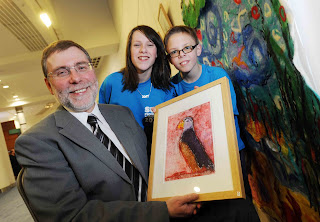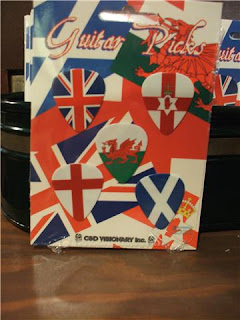Earlier this week I made a further check on the comprehensiveness of the Ulster entries in the Dictionary of Irish Biography and again it highlighted the fact that there are many omissions, especially in relation to the Ulster diaspora.
I checked it for American politicians who were born in Ulster and the following were omitted, in spite of the fact that they held significant offices in the United States of America.
James Shields (1806/10-1879) - United States senator, born in Altmore, county Tyrone
John Hugh Graham (1835-1895) - Civil War solider and United States congressman, born in Belfast
John M C Smith (1853-1923) - banker, businessman and member of the United States Congress from 1911 to 1923, born in Belfast
Alexander Harper (1786-1860) - lawyer, judge, member of the Ohio state legislature, and then member of the United States Congress from 1837 to 1839, 1843 to 1847 and 1851 to 1853, born near Belfast
Whiteside Godfrey Hunter (1841-1917) - member of the Kentucky state legislature, United States congressman for two terms and US minister to Guatamala and Honduras, born near Belfast
John Armstrong (1717-1795) - served with distinction as a major general in the War of Independence, member of the Continental Congress from 1779 to 1780, born at Brookeborough in Fermanagh
Samuel Fleming Barr (1829-1919) - United States congressman from Pennsylvania, born near Coleraine
James B Reynolds (1779-1851) - served two terms as a United States congressman from Tennessee, born in county Antrim
William Armstrong (1782-1865) - served four terms in the United States Congress, from 1825 to 1833, born in Lisburn
John T Mills (1817-1871) - justice of the supreme court in the Republic of Texas and Mills County, Texas, was named after him, born in county Antrim
Isaac Marston (1839-1891) - member of the Michigan state house of representatives and chief justice of Michigan state supreme court, born in county Armagh
Thomas Henry (1779-1849) - served three terms in the United States Congress, born in county Down
Robert Thompson Davis (1823-1906) - served three terms in the United States Congress, born in county Down
William Erigena Robinson (1813-1892) - assistant editor of the New York Tribune, served three terms in the United States Congress, born at Unagh, near Cookstown, county Tyrone
John George Warwick (1830-1892) - lieutenant governor of Ohio and member of the United States Congress, born in county Tyrone
These are just a few of the omissions in that particular subject area but they serve to make the point. The Dictionary of Irish Biography is a very useful and substantial resource but in relation to Ulster there are many signifciant omissions.









.jpg)



















